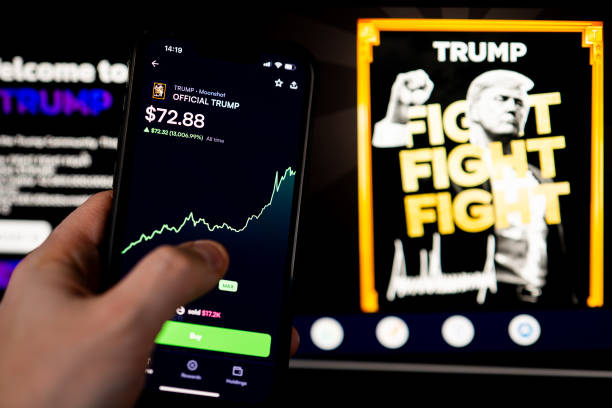
Bitcoin has reached another major milestone this November: for the first time in the cryptocurrency’s existence, 1 BTC traded for over $10,000 across exchanges. It was the result of an impressive bull run: bitcoin’s exchange rate wasn’t even at $1,000 when the year started.
Indeed, 2017 has been an eventful year for Bitcoin so far — not just because of the price increase but because of the events that got the pioneer cryptocurrency to its record highs.
In random order, these were some of the biggest stories that impacted bitcoin’s journey from $1,000 in January to $10,000 in November.
From Hard Fork Threats to “Initial Fork Offerings”
The first half of 2017 witnessed the rise of Bitcoin Unlimited. After Bitcoin XT and Bitcoin Classic, this was the third alternative protocol implementation designed to trigger a block size limit increase hard fork. Almost half of all newly mined blocks were signaling support for this incompatible protocol change by spring, which could have led to a “split” of the Bitcoin network into two different blockchains and currencies.
Such a thing had never happened before, and it was considered by many to be a potential threat — not in the least because some Bitcoin Unlimited proponents were openly speculating about 51%-attacking the original Bitcoin blockchain.
But partly because of a series of bugs that crashed all Bitcoin Unlimited nodes, partly because major exchanges announced their intention to list any coin resulting from a fork as a new asset (BTU, not BTC), and partly because the New York Agreement killed any momentum it had left, Bitcoin Unlimited’s relevance decreased before the summer. At the same time, bitcoin’s exchange rate increased from just over $1,000 to over $2,000.
During the summer, however, another protocol implementation — Bitcoin ABC — announced a similar initiative. Compared to previous attempts, Bitcoin ABC employed a much more viable strategy, in large part because its lead developer acknowledged they were indeed creating a new coin: Bitcoin Cash (BCH, also referred to as Bcash) — not Bitcoin (BTC).
Interestingly, when this fork finally occurred on August 1, the markets responded positively. While BTC had been trading at a little under $3,000 before the fork, the combined value of the two coins were trading at over $3,000 shortly after the fork: holders were rewarded for holding. Moreover, in the weeks that followed, BTC’s exchange rate surged to over $4,000 for the first time.
All of a sudden, the prospect of a fork was no longer something to be feared. While SegWit2x (B2X) was suspended because that project did not want to create a new coin, many users now welcomed new “initial fork offerings” like Bitcoin Gold (BTG).
The Institutional Acceptance
Up until 2017, it was difficult for institutional money, at least in the United States, to gain exposure to the bitcoin markets. The closest that Wall Street could come to BTC was perhaps via Barry Silbert’s Bitcoin Investment Trust (BIT) through its GBTC shares. This is a private investment vehicle, however, which most funds and institutional firms won’t touch for a number of reasons. Plus, arbitrage between it and the bitcoin markets is difficult.
It initially did not look as if this situation would get much better. Throughout the first months of 2017, bitcoiners were anticipating potential U.S. Securities and Exchange Commission (SEC) approval of the Winklevoss twins’ COIN exchange traded fund (ETF). This ETF would have been tradable much like gold ETFs, which essentially means that institutional investors would have been able to easily buy and sell BTC derivatives without having to worry about holding actual BTC.
After years of review, this ETF was rejected. But interestingly, and as opposed to what many may have been expecting, this disappointment didn’t have much of an effect on bitcoin’s price. The exchange rate that had been building up to over $1,100 in anticipation of the SEC verdict did dip to below $1,000 in the two weeks after the rejection, but this fully recovered in April, even breaching new all time highs.
Throughout the rest of 2017, new entry points into the bitcoin markets were starting to form after all.
By July, as bitcoin was still trading under $3,000, the U.S. Commodity Futures Trading Commission (CFTC) granted a derivatives clearing organization (DCO) license to LedgerX. This gave the New York‒based startup permission to exchange and clear Bitcoin options and futures, and to swap products.
Then, by August — BTC was still trading under $3,000 — Cboe announced plans to launch cash-settled Bitcoin futures. While these technically still don’t let institutional investors put money into bitcoin directly, they allow them to bet on the price of bitcoin. And importantly, if investors bet on a price increase, market makers will most likely hedge their bets by buying actual BTC; that’s how they can be sure to make money. In other words: institutional demand translates into a real BTC price increase. The month closed near $5,000.
October, when bitcoin was already trading over $5,000, was another big month for institutional acceptance. By then, the first trades were happening on LedgerX: about $1 million worth in the first week. At the end of October, still before the bitcoin price had ever reached $6,000, major derivatives marketplace operator CMEannounced plans to launch a Bitcoin futures product as well, similar to Cboe. Bitcoin’s price shot up to over $7,000 within weeks.
The Long-Awaited Activation of Segregated Witness
Bitcoin development has accelerated tremendously over the past years. A ton of improvements, optimizations and innovations are embedded in the two major Bitcoin Core releases that saw the light of day in 2017, and projects like the lightning network, TumbleBit and others are all inching closer to release.
But the biggest tech innovation deployed on the Bitcoin network would have to be Segregated Witness (SegWit). First proposed as a soft fork back in 2015 and implemented in the Bitcoin Core software client by late 2016, the upgrade initially faced an uphill battle to adoption. Segments of the Bitcoin community, and in particular some major miners, opposed the upgrade or wanted a block size limit increase hard fork as part of the deal for activation. Since there was no consensus for such a hard fork, the situation appeared deadlocked.
This changed in early 2017. In February, when bitcoin was still trading at around $1,000, the pseudonymous developer Shaolinfry proposed a new idea to get SegWit activated: a user-activated soft fork (UASF). Instead of having miners activate the soft fork (as had become the norm over the past years), users could set a deadline at which they would start enforcing the new rules themselves.
Probably motivated by SegWit’s successful deployment on Litecoin, fueled by the AsicBoost controversy and propelled in a counter-reaction to the controversial New York Agreement, one of the proposed UASFs — BIP148 — started to gain significant traction by summer.
When BTC1, the protocol implementation based on the New York Agreement, agreed to implement the BIP91 “kludge,” the two main scaling proposals were potentially aligned in compatibility to activate SegWit — if miners would activate the soft fork in time.
With the BIP148 deadline set for August 1, and still no activation by mid-July, the markets became nervous: BTC dipped from over $3,000 to under $2,000. But when Segregated Witness was finally activated in time to avoid a network split after all, the markets quickly rebounded … and continued to surge to new highs of almost $5,000 by the end of August.
The End of the Chinese Bogeyman
Ever since 2013, China had increasingly taken the lead in the bitcoin markets. The price run-up in November of that year was led by Chinese exchanges, which also dominated trading volume for the years to come.
However, this Chinese dominance could also startle the bitcoin markets from time to time. Rumors that China would “ban” Bitcoin put an end to the bull run in November of 2013 fast. And while those initial news stories were overblown, similar “China bans Bitcoin” rumors have recurred from time to time. They were always proven mostly or completely false, but they almost always scared the markets, causing (temporary) price drops.
Then, this year, the rumors finally held up — at least to a meaningful extent.
In the first weeks of 2017, the Chinese central bank, the People’s Bank of China (PBOC), launched spot checks on several exchanges — not with the intention of banning Bitcoin but of enacting stricter regulation. Most importantly, leveraged trading and zero-fee trading were made illegal, thereby collapsing Chinese trading volume.
The new policy had a negative effect on the markets at first, as BTC dipped from over $1,000 to under $800 halfway through January: the lowest it has been this year. But the price did correct quickly; BTC was trading at $1,000 levels by February.
Then, two major Chinese exchanges — OKcoin and Huobi — announced that bitcoin withdrawals would be suspended for a month by mid-February. While we can only speculate about PBOC involvement, this news wasn’t exactly perceived as positive either. Bitcoin’s exchange rate dipped slightly below $1,000 once again — though this time only by a little, and it recovered within days.
The real shocker followed much later, in the second half of 2017. In early September, the PBOC issued a statement completely banning ICOs (initial coin offerings). Chinese ICO projects seized operations, and funds were returned to investors.
This ban did not affect Bitcoin officially, but when exchange representatives met with Chinese regulators in the days and weeks that followed, all of them announced they would completely halt bitcoin trading. While Bitcoin is still not officially illegal in China, by the end of October all exchanges had either closed shop or moved abroad.
The price of bitcoin seemed to have been significantly affected by this news at first. While it had been closing in on $5,000 by early September, it dropped to almost $3,000 by the middle of that month. However, this dip did not last very long either: the price was back in its upswing within weeks, reaching levels from before the ban as soon as mid-October and breaking new all-time highs of over $6,000 in the weeks that followed.
Perhaps not unlike the bust of Silk Road in 2013, an event that was widely expected to bring bitcoin’s exchange rate down significantly, the news out of China turned out to be not that big of a deal at all. And exactly because the effects weren’t as bad as generally expected, it may have even had a bullish effect on the markets.
Price Moves Price
Arguably, one thing moves the price of bitcoin more than anything else: the price of bitcoin itself. Any time bitcoin’s exchange rate hits these new milestone highs, (mainstream) media takes notice, in turn attracting more attention to bitcoin and drawing in more new users. This, of course, pushes up the price even further.
And the past year has seen a lot of milestones.
While it wasn’t the first time ever that bitcoin traded over $1,000 — it had already happened briefly in late 2013 — the new $1,000 milestone was reached on the first days of 2017. The fact that this happened almost precisely at the same time the new year took off certainly helped write catchy headlines and juicy stories: Would 2017 be the year of Bitcoin?
Then, in March, a completely new milestone was reached: BTC for the first time hit parity with an ounce of gold. This is, of course, a rather arbitrary milestone: an ounce of gold is not 1/21,000,000 of all gold, while a bitcoin is 1/21,000,000 of all bitcoin. Yet, in 2013, it seemed to be a point of resistance for the markets: the bull run of the second half of that year peaked just before “gold parity” was reached. And of course, the symbolism was obvious: “gold 2.0” overtook its physical predecessor.
One month later, bitcoin for the first time in well over three years reached another all-time high. The November record of $1,277 on MtGox — which was probably artificially high due, in part, to market manipulation — was breached across exchanges on April 26 of this year. Bitcoin was back after a long “winter sleep,” and of course the media took notice.
Needless to say at this point, bitcoin kept breaking records throughout the rest of the year. The bitcoin markets hit $2,000 for the first time ever in May, followed by $3,000 in June and up to $4,000 in August, making headlines each time — after which the price retracted a bit toward the end of the summer.
By late September, “FOMO” (Fear of Missing Out) really kicked in. With bitcoin surging over $4,000 once again, then $5,000, $6,000, $7,000, $8,000 and $9,000 on an almost weekly basis, the media piled on for each step, fueling the momentum even more.
Finally, led by South Korean exchanges and followed by the rest of the world a day later, bitcoin breached the $10,000 mark in the last week of November 2017.










